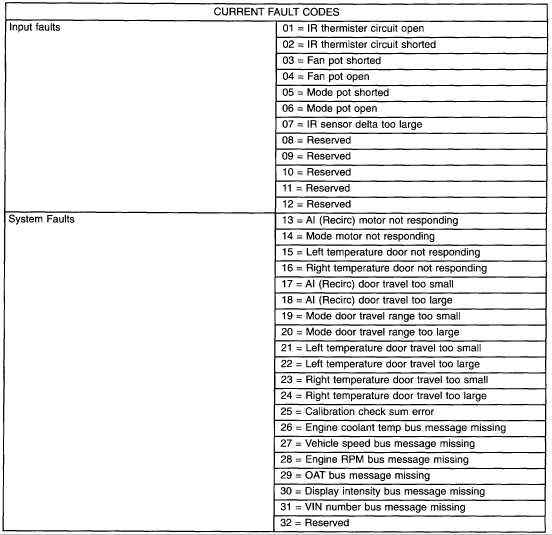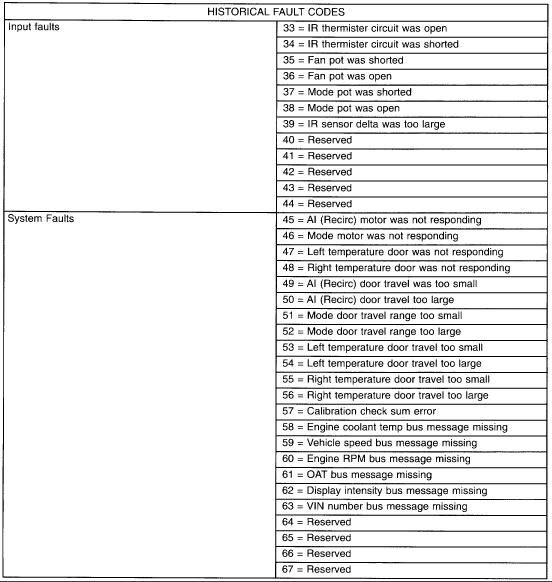The Automatic Zone Control (AZC) control module has a system self-diagnostic mode which continuously monitors various parameters during normal system operation. If a system fault is detected, a current and historical fault is recorded. When the current fault is cleared, the historical fault remains until reset (manually or automatically). Both the current and historical fault codes can be accessed through either the front panel, or over the Programmable Communications Interface (PCI) bus using a DRB III scan tool, and the proper Diagnostic Procedures.
The AZC control module is capable of three different types of self-diagnostic tests, as follows:
* Fault Code Tests
* Input Circuit Tests
* Output Circuit/Actuator Tests
The information that follows describes:
* How to read the self-diagnostic display
* How to enter the AZC control module self-diagnostic test mode
* How to select the self-diagnostic test types
* How to perform the different tests
Entering the AZC Self-Diagnostic Mode
To enter the AZC self-diagnostic mode, perform the following:
1. Depress the A/C and Recirc buttons at the same time and hold. Rotate the left temperature control **** clockwise (CW) one detent.
2. If you continue to hold the A/C and Recirc buttons depressed, the AZC control module will perform a Segment Test of the vacuum fluorescent (VF) display In the Segment Test you should see all of the display segments illuminate as long as both buttons are held. If a display segment fails to illuminate, the vacuum fluorescent display is faulty and the heater-A/C control must be replaced.
3. After viewing the Segment Test, release the A/C and Recirc buttons and the display will clear momentarily If the display remains blank then no faults are set in the system. Should there be any faults, either "current" or "historical", all fault codes will be displayed in ascending numerical sequence (note no effort is made to display fault codes in chronological order). Each fault code is displayed for one second before the next code is displayed. Once all fault codes have been displayed, the system will then repeat the fault code numbers. This will continue until the left side set temperature control is moved at least one detent position in the CW direction or the ignition is turned "OFF".
For further diagnosis, refer to Body Control Module (BCM). See: Powertrain Management Computers and Control Systems Testing and Inspection Diagnostic Trouble Code Descriptions Detailed Descriptions Heating and A/C
Fault Code Tests
Fault codes are two-digit numbers that identify a circuit that is malfunctioning. There are two different kinds of fault codes.
1. Current Fault Codes - Current means the fault is present right now. There are two types of current faults: input faults, and system faults. If the system has a current fault when the ignition is turned "ON", or during normal operation a current fault occurs, the right side set temperature digits will display "ER" at maximum intensity while the left side set temperature digits are blanked.
2. Historical Fault Codes - Historical or stored means that the fault occurred previously, but is not present right now. A majority of historical fault codes are caused by intermittent wire harness or wire harness connector problems.
NOTE: A battery disconnect will erase all faults stored in Random Access Memory (RAM) of the AZC control module. It is recommended that all faults be recorded before they are erased.
Retrieving Fault Codes
1. To begin the fault code tests, depress the A/C and Recirc buttons at the same time and rotate the left temperature control **** clockwise (CW) one detent, then release the push-button.


Saturday, November 23rd, 2019 AT 11:45 AM
(Merged)



